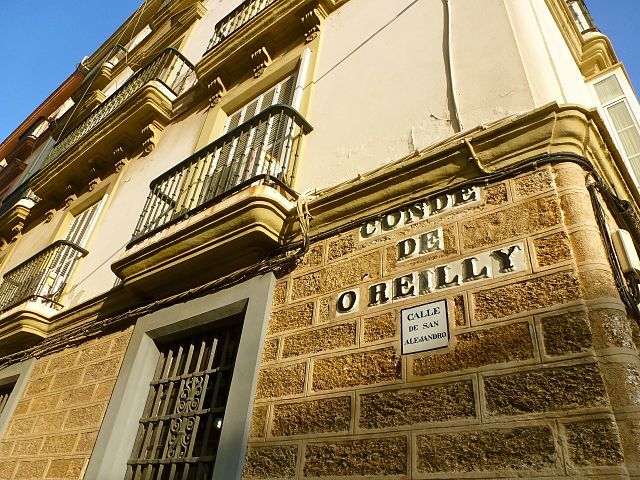Invasion of Algiers (1775)
The invasion of Algiers was a massive and disastrous amphibious attempt in July 1775 by a combined Spanish and Tuscan force to capture the city of Algiers, the capital of The Deylik of Algeria. The amphibious assault was led by Spanish general Alexander O'Reilly and Tuscan admiral Sir John Acton, commanding a total of 20,000 men along with 74 warships of various sizes and 230 transport ships carrying the troops for the invasion. The defending Algerian forces were led by Baba Mohammed ben-Osman. The assault was ordered by the King of Spain, Charles III, who was attempting to demonstrate to the Barbary States the power of the revitalized Spanish military after the disastrous Spanish experience in the Seven Years' War. The assault was also meant to demonstrate that Spain would defend its North African exclaves against any Ottoman or Moroccan encroachment, and reduce the influence that the Barbary states held in the Mediterranean.
Portrait of Alejandro O'Reilly by Francisco de Goya.
Portrait of Sir John Acton, attributed to Emanuele Napoli
Alejandro O'Reilly, 1st Count of O'Reilly, KOA, English: Alexander, Count of O'Reilly, Irish: Alastar Ó Raghallaigh, was an Irish-born military reformer and Inspector-General of Infantry for the Spanish Empire in the second half of the 18th century. O'Reilly served as the second Spanish governor of colonial Louisiana, and is the first Spanish official to exercise power in the Louisiana territory after France ceded it to Spain following defeat by Great Britain in the Seven Years' War. For his much appreciated services to the Crown of Spain, O'Reilly was ennobled as a conde de O'Reilly, and granted a coat of arms. He fell out of favour after his calamitous failed attempt at the Invasion of Algiers.
Portrait by Francisco Goya
Street in Cádiz, which honours the memory of Marshal Alejandro, Conde de O'Reilly (1723, Baltrasna, County Meath, Ireland – 1794 in Bonete, Spain.



